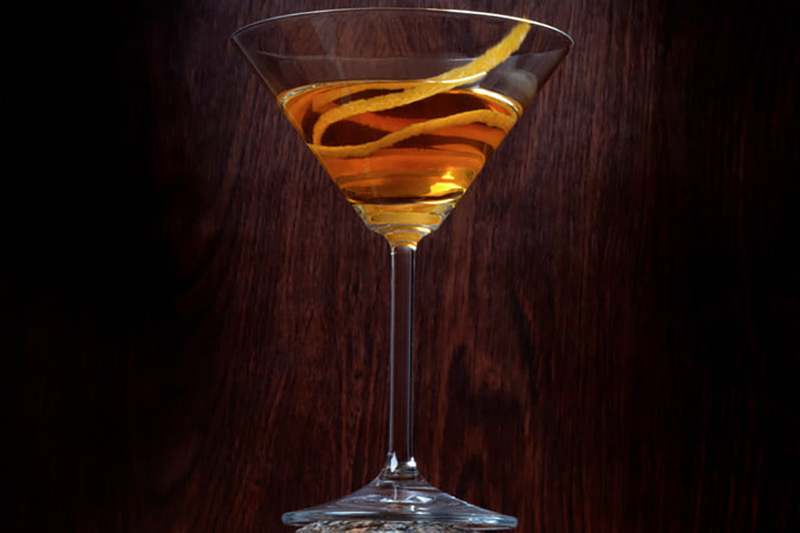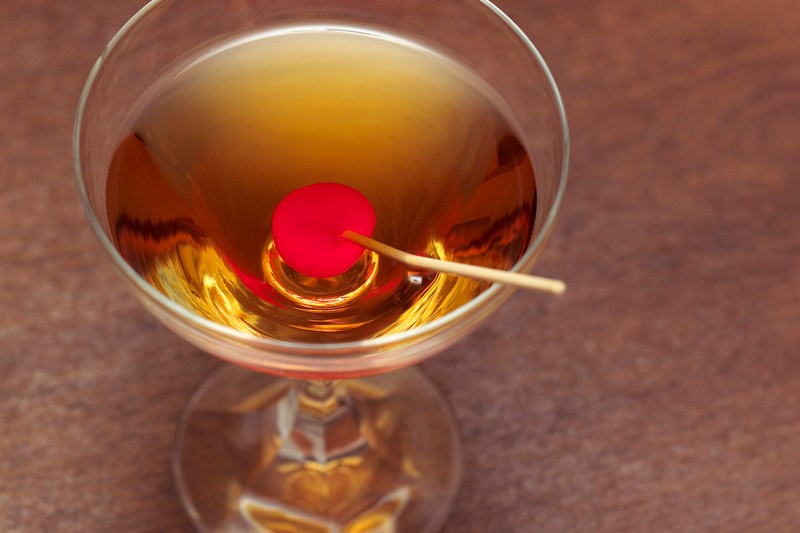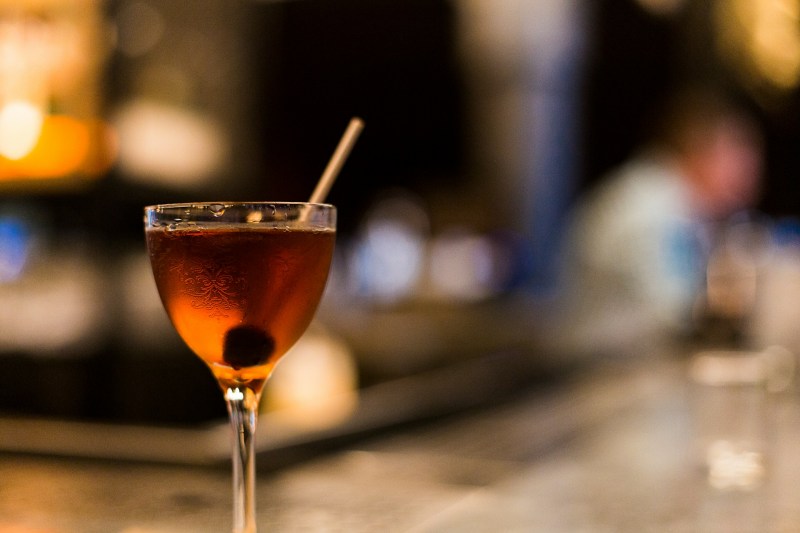
Of the many classic cocktails worthy of your time, the Rob Roy may have the best name. The title itself is friendly and hard to forget, not unlike the drink itself. The hypnotic hue of the drink as it shrinks into the base of a Nick and Nora glass is reason enough to adore the Rob Roy, but there are many more merits to this mixed beverage.
Essentially a Manhattan with Scotch whisky, the Rob Roy cocktail was born in 1894. Inherently classy, the drink was devised in the iconic Waldorf Astoria Hotel in New York City. The Manhattan came first, concocted a couple of decades earlier. With the name of its home borough already taken, the creators opted to honor the Broadway premiere of an operetta released at the time about the legendary Scottish outlaw and folk hero Robert Roy MacGregor.
Like a martini, it’s typically served up dressed with a pair of cherries. There are three slightly different variations — sweet (made with sweet vermouth), dry (made with dry vermouth), and perfect, an even mix of the two. Like many of its classic counterparts, the Rob Roy is straightforward on the surface. But if you want this evocative drink to really speak to you, it’s imperative to both nail the few ingredients at play and execute the assembly.
With the vermouth playing a rather large role, having to stand up to Scotch without another spirit to cut into it, it’s critical to go with a well-made option. Certainly, play around with small-batch vermouths from your favorite producers, but if you’re looking for reliable, seek out something like Carpano Antica or Cocchi di Torino.
Speaking of Scotch, a balanced, blended option is best here. We love a peaty Islay, but the smokiness can fully sabotage a Rob Roy. Remember that we’re playing off of the botanical, wine-like nature of vermouth, not burying it. Try a lighter whisky, like the one in the classic recipe below or a more delicate option, like a lot of what’s coming out of Japan at the moment.
The Rob Roy’s only downfall may be its ties to the half-drunk, day-sipping era of the mid-20th century. And while the cocktail enjoyed a bit more popularity then, it’s evolved a bit since and remains a staple drink. Try a lower-proof Scotch or 1.5 ounces of Scotch instead of the traditional 2 to bring it into the modern era. In today’s cocktail culture, lighter — even if only marginally so — is often better.
Chilling is pretty important with a drink like this, as it tempers the Scotch some. As you make one (or a large format batch) at home, remember to stir with ice as well as pour into a pre-chilled glass, for maximum coolness. A little lemon is recommended, especially when preparing a dry version of the drink. The juice from a single lemon twist, often used as a garnish for the style, is typically enough, but trust your palate and adjust accordingly.
Classic Rob Roy cocktail recipe

You can’t touch a classic. Here, a fine Scotch meshes with the fig and herb notes of a classic vermouth. Even better, the drink is further aromatized via bitters and treated to the ultimate garnish in the brandied cherry.
Ingredients
- 2 ounces Balvenie Doublewood 12-year Scotch whisky
- 3/4 ounce Carpano Antica Formula vermouth
- 1 dash Angostura bitters
- 1 brandied cherry for garnish
Method
- Stir all ingredients over ice.
- Strain it into a chilled glass.
- Garnish with the brandied cherry.
Other versions of the Rob Roy cocktail

Above, we have the classic Rob Roy, but there are some twists on the classic. Depending on your tastes, you can mix it up with the following versions.
- Dry Rob Roy: This version swaps the sweet vermouth for dry vermouth, resulting in a drier and less sweet cocktail.
- Perfect Rob Roy: This variation uses equal parts sweet and dry vermouth, creating a more balanced sweetness level compared to the classic Rob Roy.
- Bobby Burns: This twist gets a bit more adventurous, replacing the Angostura bitters with Benedictine, a herbal liqueur that adds a touch of sweetness and complexity.
- Boulevardier: This cocktail essentially combines a Rob Roy and a Negroni. Keep the Scotch, but swap the sweet vermouth for Byrrh (a fortified wine) and use Campari instead of Angostura bitters. This results in a more bitter and herbal drink.
- Manhattan (sort of): Since the Rob Roy is essentially a Manhattan made with Scotch instead of rye or bourbon, you can simply swap the Scotch for those whiskeys for a classic Manhattan experience.
Editors' Recommendations
- The transfusion drink is our favorite golf cocktail — here’s how to make it
- The paper plane cocktail puts a bourbon twist on a classic drink
- 33 easy and delicious recipes any man can make
- Burnt ends are a BBQ favorite — here’s how to make them
- How to make a Dark and Stormy, the rum-centric sibling of the Moscow Mule


